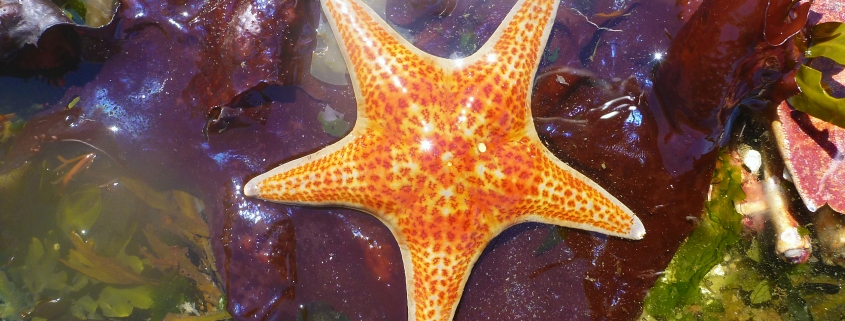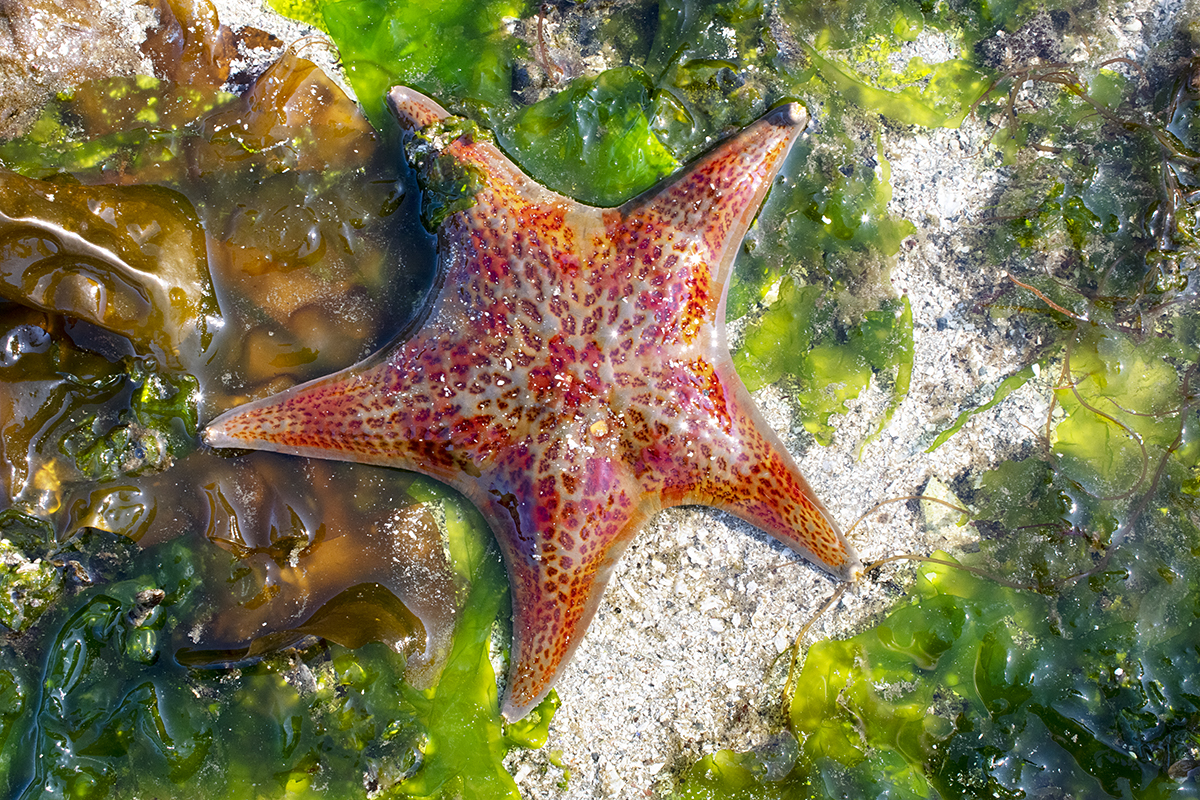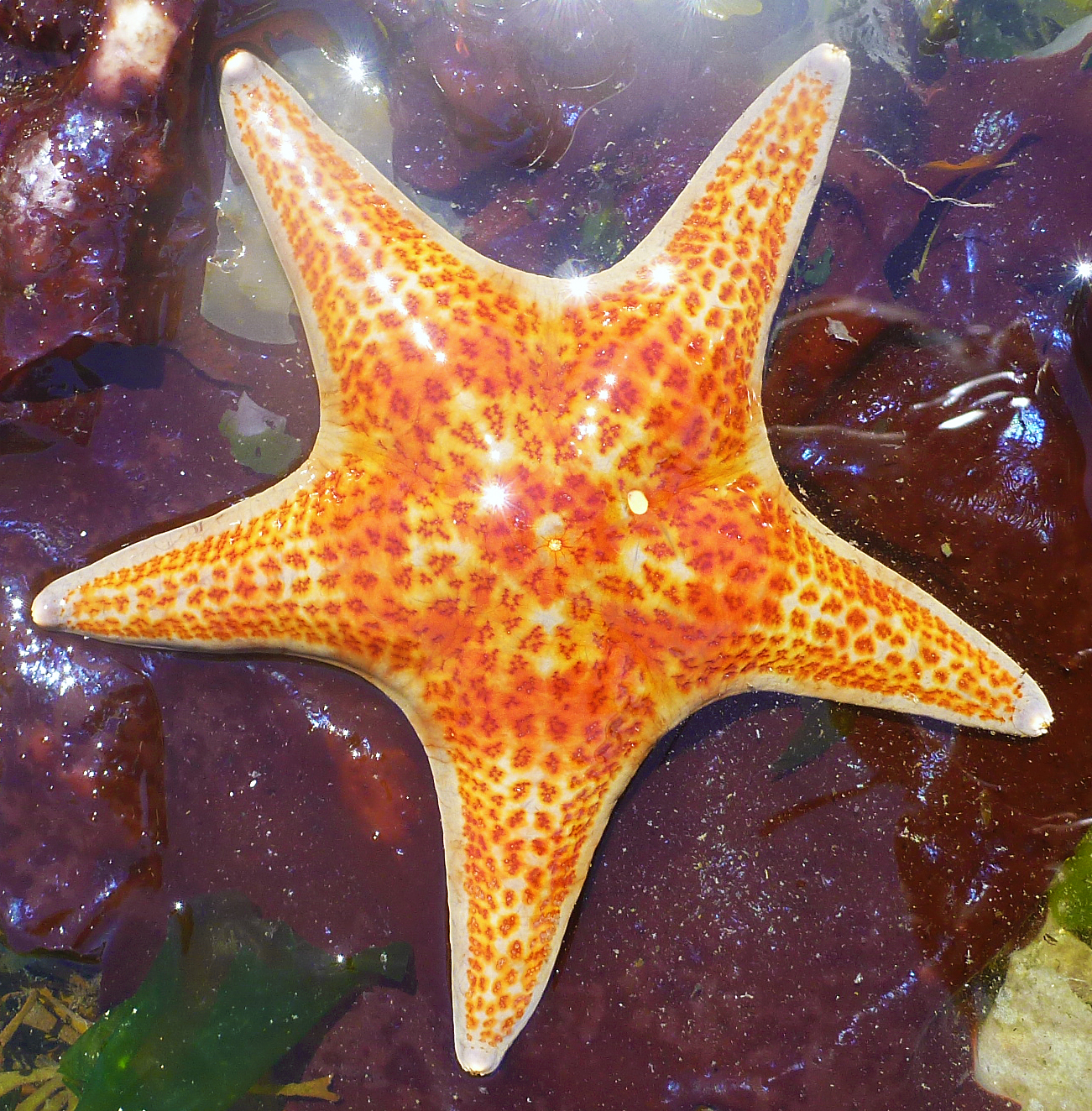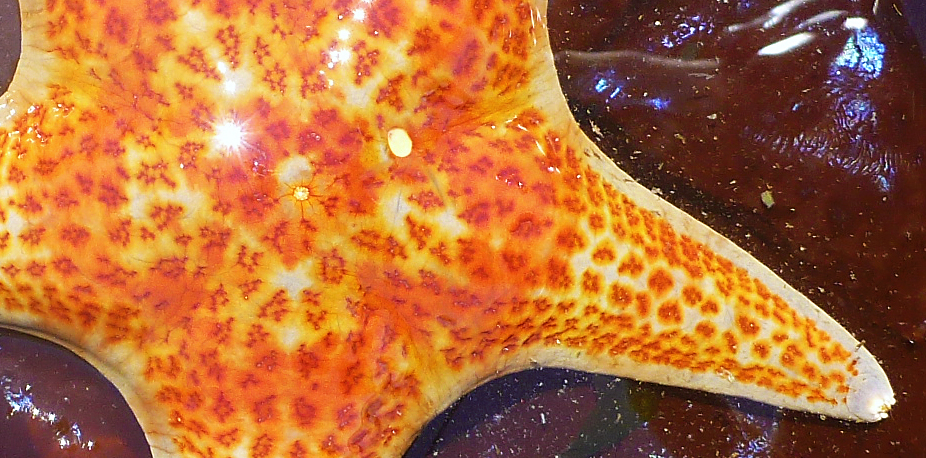Leather Star
Scientific name: Dermasterias imbricata
Size: Up to 30cm
Identifying Features The Leather Star (also commonly called the ‘Garlic Star’) is a five-legged echinoderm. The Leather Star often has light blue skin with reddish scales, and when rubbed smells faintly of garlic.
Habitat Dermasterias imbricata is found from the central coast of Alaska to northern Mexico. They generally live among the rocks in low intertidal zones, but can be found up to 300ft deep.
A Leather Star at low tide at Prevost Island, British Columbia.
Food/Prey Leather Stars often feed on anemones, but will also consume sea cucumbers, sea urchins, sponges, chitons, and fish eggs. Sea stars feed by attaching to its prey using tube feet on the bottom of its arms. It uses its arms to pry open the victim’s shell, just wide enough so the sea star can squeeze its stomach into the shell. The sea star’s stomach comes out through its mouth, and once inside it’s prey’s shell, digests it, and retracts the stomach back into its mouth, leaving an empty shell. One has been observed feeding on the Stiff-Footed Sea Cucumber (Eupentacta quinquesemita) in our class aquarium.
Predators Starfish do not have many predators, as their outer skin is quite hard, but manta rays, sharks, other large fish, and even certain types of snails will eat them. Larger sea stars are also a threat. The leather star uses its garlic-like odor to ward of enemies, and like many sea stars, has sensitive skin that can detect chemical changes in the water.
Life Cycle Sea stars can reproduce sexually and asexually. They reproduce asexually by dividing their bodies and regenerating missing parts. The decapitated starfish limb can grow into a new sea star, so long as a part of the central body portion is attached. In sexual reproduction, a sea star’s eggs are externally fertilized by a male sea star’s spermatozoa. The fertilized eggs develop into swimming larvae categorized into two groups: Bipinnaria and Brachiolaria. These larvae use cilia to move and eventually settle to the ground when growing into adults. When developing into a fully grown sea star, the larva’s left side will become its oral structures, facing the ground, and its right side will become it’s back.
References
Acadia Oceanside Meadows Inn. Echinoderms, Acadia Oceanside Meadows Inn, Downeast Maine Bed and Breakfast. Retrieved January 22nd, 2012 from www.oceaninn.com/the-nature-preserve/echinoderms/
Cowles, Dave (2005). Dermasterias imbricata, Invertebrates of the Salish Sea. Retrieved January 11th, 2012 fromwww.wallawalla.edu/academics/departments/biology/rosario/inverts/Echinodermata/Class%20Asteroidea/Dermasterias_imbricata.html
Jamison, David W. Leather Star Dermasterias imbricata Explore Puget Sound habitats and marine life with David W. Jamison. Retrieved January 7th, 2012 fromwww.pugetsoundsealife.com/habitats+sealife/Leather_Star.html
Lamb, Andy and Hanby, Bernard P. (2005) Marine Life of the Pacific Northwest: A Photographic Encyclopedia of Invertebrates, Seaweeds, and Selected Fishes
Harbour Publishing: Madeira, British Columbia
North Island Explorer. Leather Star: Dermasterias imbricata, North Vancouver Island Explorer. Retrieved January 7th, 2012 from northislandexplorer.com/echinoderms/leatherstar.htm
(April 6th, 2010) What Eats Starfish? What Eats? – A Food Website for Kids. Retrieved from:www.whateats.com/what-eats-a-starfish








Leave a Reply
Want to join the discussion?Feel free to contribute!